Digs & Discoveries
Off the Grid
By MARLEY BROWN
Friday, December 03, 2021
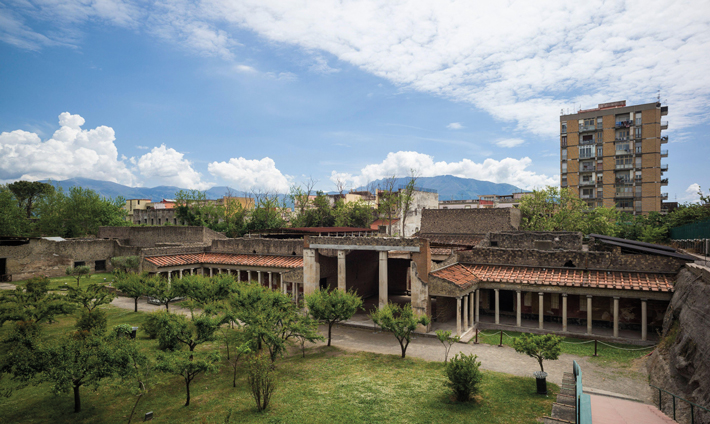
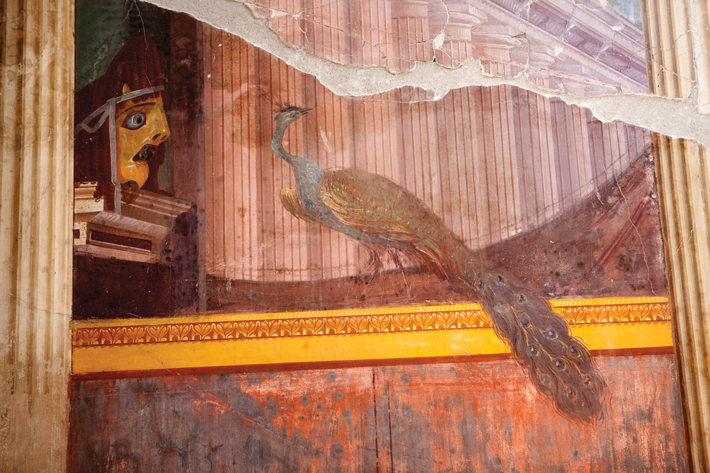 The city of Pompeii was part of a thriving coastal region when it was destroyed by the A.D. 79 eruption of Mount Vesuvius. Entire farms, villages, and grand private estates on the Bay of Naples were buried under a thick layer of ash and debris. Among them were luxurious villas built by some of Rome’s most prominent families in the town of Oplontis, which is located in the modern city of Torre Annunziata, three miles west of Pompeii. The best preserved and most thoroughly studied of these is called Villa A, or Villa Poppaea. The 75,000-square-foot property is named for the second wife of the Roman emperor Nero (r. A.D. 54–68), Poppaea Sabina, who may have once owned it. Built around 50 B.C. on a high bluff looking out to sea—but now below the modern street level—the villa contains wall paintings depicting fantastical architecture and has been the site of pioneering work in garden archaeology.
The city of Pompeii was part of a thriving coastal region when it was destroyed by the A.D. 79 eruption of Mount Vesuvius. Entire farms, villages, and grand private estates on the Bay of Naples were buried under a thick layer of ash and debris. Among them were luxurious villas built by some of Rome’s most prominent families in the town of Oplontis, which is located in the modern city of Torre Annunziata, three miles west of Pompeii. The best preserved and most thoroughly studied of these is called Villa A, or Villa Poppaea. The 75,000-square-foot property is named for the second wife of the Roman emperor Nero (r. A.D. 54–68), Poppaea Sabina, who may have once owned it. Built around 50 B.C. on a high bluff looking out to sea—but now below the modern street level—the villa contains wall paintings depicting fantastical architecture and has been the site of pioneering work in garden archaeology.
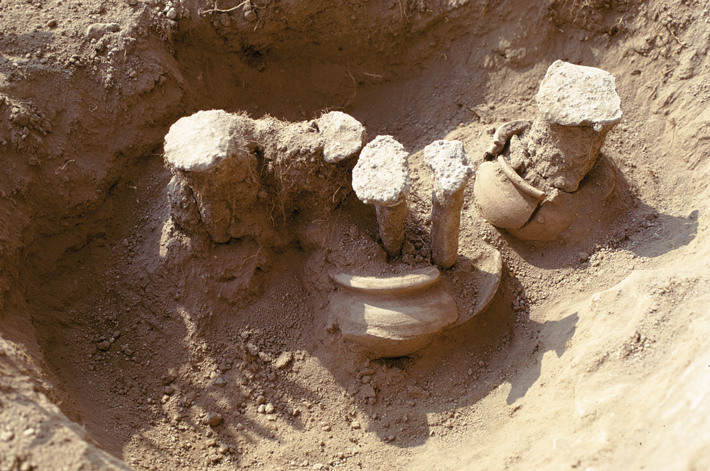 To learn more about the villa’s gardens, researchers have made plaster casts of cavities left by roots that were preserved by the eruption but have since decayed. They have also analyzed pollen remains to identify plant species, and recovered ancient seeds from the soil. Archaeologist Kathryn Gleason of Cornell University says that villas at Oplontis were home to pleasure gardens meant to show off the sophistication of their owners, who imported specimens from throughout the expanding Roman Empire and made use of the latest horticultural techniques. “Learned owners enjoyed propagating plants and grafting different varieties,” says Gleason. “Gardens like these supplemented the household table, provided shade and privacy for pleasurable strolls with friends, and were a place where you could show off highly developed forms of cultivation.” For more, go to "Food and Wine Gardens."
To learn more about the villa’s gardens, researchers have made plaster casts of cavities left by roots that were preserved by the eruption but have since decayed. They have also analyzed pollen remains to identify plant species, and recovered ancient seeds from the soil. Archaeologist Kathryn Gleason of Cornell University says that villas at Oplontis were home to pleasure gardens meant to show off the sophistication of their owners, who imported specimens from throughout the expanding Roman Empire and made use of the latest horticultural techniques. “Learned owners enjoyed propagating plants and grafting different varieties,” says Gleason. “Gardens like these supplemented the household table, provided shade and privacy for pleasurable strolls with friends, and were a place where you could show off highly developed forms of cultivation.” For more, go to "Food and Wine Gardens."
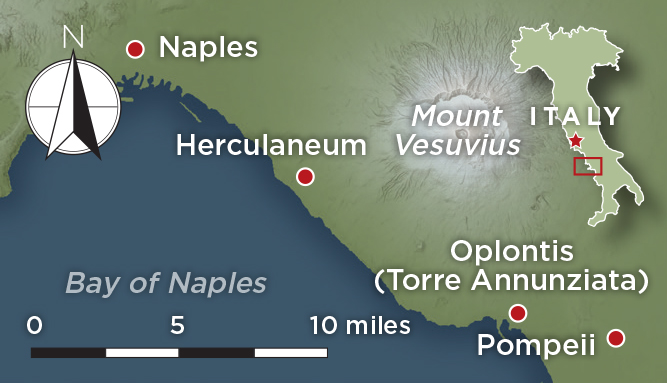 THE SITE
THE SITE
Villa Poppaea, which has been partially reconstructed and restored, is open for exploration. Bring a guidebook for reference as you tour its many rooms, including the kitchen, atrium, and triclinium, or dining room. Accredited local guides can also be hired. Recently, the ruins of the ground floor of the nearby Villa B have been opened to visitors for the first time in many years. This second-century B.C. structure, also known as the Villa of L. Crassius Tertius, may have been a storage and processing warehouse for wine and agricultural goods with a family residence on top.
WHILE YOU’RE THERE
Travelers to the Bay of Naples interested in ancient Roman agriculture and horticulture should be sure to make the five-minute drive inland from Oplontis to Boscoreale. There you can visit Villa Regina, a Roman farm also preserved by the eruption, as well as the Antiquarium of Boscoreale, a museum dedicated to the lifeways of the Vesuvian countryside.
Japan's Genetic History
By DANIEL WEISS
Friday, December 03, 2021
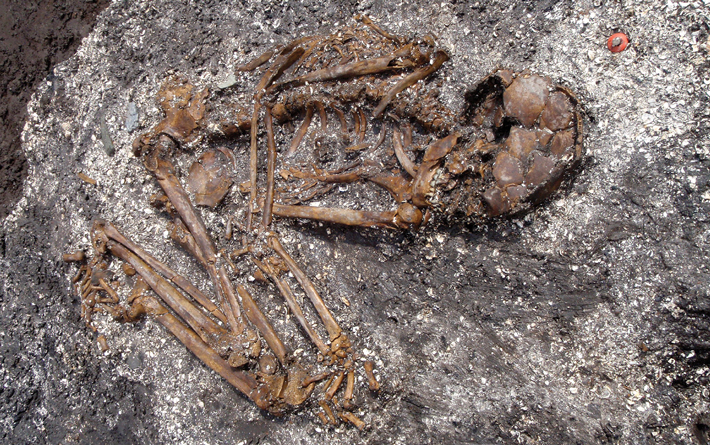
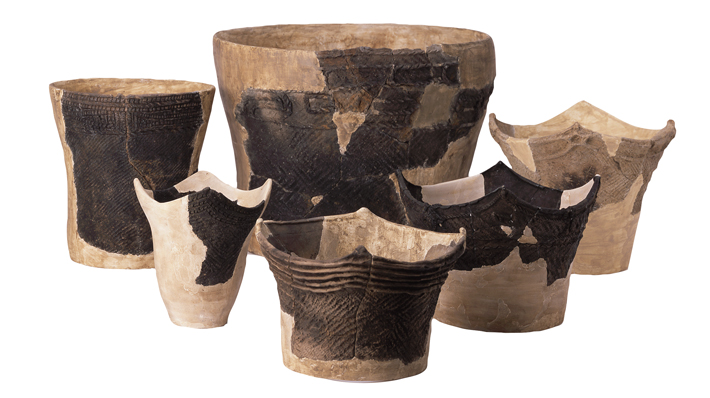 The genetic origins of modern Japanese people have traditionally been traced to two populations: Jomon hunter-gatherers and Yayoi farmers. New research has identified evidence of a third ancestral strand, dating to the imperial Kofun period (A.D. 300–700), when the modern Japanese state began to take shape. A team led by geneticist Shigeki Nakagome of Trinity College Dublin analyzed 12 newly sequenced genomes—nine from the Jomon and three from the Kofun period. The team also studied five previously published genomes—three from Jomon and two from Yayoi individuals.
The genetic origins of modern Japanese people have traditionally been traced to two populations: Jomon hunter-gatherers and Yayoi farmers. New research has identified evidence of a third ancestral strand, dating to the imperial Kofun period (A.D. 300–700), when the modern Japanese state began to take shape. A team led by geneticist Shigeki Nakagome of Trinity College Dublin analyzed 12 newly sequenced genomes—nine from the Jomon and three from the Kofun period. The team also studied five previously published genomes—three from Jomon and two from Yayoi individuals.
Their findings show that the emergence of the Jomon lineage dates to around 20,000 years ago, when a land bridge connected the Korean Peninsula to Japan. Around 17,000 years ago, sea levels rose, submerging the land bridge and isolating the Jomon from continental Asia for millennia, until agriculturalists arrived starting around 3,000 years ago and developed the Yayoi culture. According to the team’s analysis, these wet-rice farmers appear to have come from northeastern Asia. Unlike in Europe, where newly arrived farmers supplanted local hunter-gatherers, the Yayoi assimilated with the Jomon.
The researchers found that during the Kofun period, people with East Asian ancestry, most likely Han Chinese, migrated to Japan and added their genes to those of the Jomon and Yayoi. Archaeological evidence and historical records have suggested that a group of migrants arrived around this time, but this is the first genetic evidence of Japan’s tripartite lineage. “Previous studies that looked at modern genomic variation proposed that there might have been more than two major migrations to Japan,” says Nakagome. “But because they only looked at the modern population, they couldn’t identify when and where the additional genetic component came from.”
Viking Roles
By DANIEL WEISS
Friday, December 03, 2021
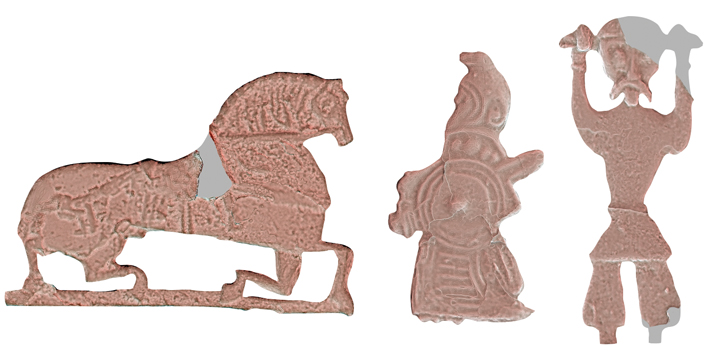 Small bronze figurines of women clad in armor and bearing weapons that date to the Viking Age have traditionally been seen as representations of Valkyries, the female warriors of Norse mythology who determined whether human combatants lived or died. Analysis of some of the 7,000 fragments of ceramic molds discovered at the site of Ribe in southwestern Denmark that were used to make these figurines, however, suggests that they actually depict human participants in ritual ceremonies. Using high-resolution laser scans of the ceramic fragments, researchers led by Pieterjan Deckers, an archaeologist now at the Vrije Universiteit Brussel, fashioned 3-D models of the complete molds that were used to create the figurines in the first few decades of the ninth century A.D. In addition to the armed women, these include a man pulling his hair, a saddled stallion without a rider, and miniature wheels, swords, and shields.
Small bronze figurines of women clad in armor and bearing weapons that date to the Viking Age have traditionally been seen as representations of Valkyries, the female warriors of Norse mythology who determined whether human combatants lived or died. Analysis of some of the 7,000 fragments of ceramic molds discovered at the site of Ribe in southwestern Denmark that were used to make these figurines, however, suggests that they actually depict human participants in ritual ceremonies. Using high-resolution laser scans of the ceramic fragments, researchers led by Pieterjan Deckers, an archaeologist now at the Vrije Universiteit Brussel, fashioned 3-D models of the complete molds that were used to create the figurines in the first few decades of the ninth century A.D. In addition to the armed women, these include a man pulling his hair, a saddled stallion without a rider, and miniature wheels, swords, and shields.
The team observed that the figurines crafted at the Ribe workshop are very similar to images on tapestry fragments found in the Oseberg ship burial in Norway, which also dates to the early ninth century A.D. Given that the Oseberg tapestries are generally understood to depict a ceremonial procession, Deckers and his team surmise that the figurines represent people participating in a ritual in which gender norms were upended. Deckers points out that the armed women wear antiquated helmets and long dresses that would be impractical on the battlefield. “They carry their shields under their arms, or even with the shield inside out,” he says. “They seem to be subverting the warrior image, playing a role.” Likewise, he says, the man pulling his hair is engaged in what was, at the time, seen as a typically feminine gesture.
A Ride Through the Countryside
By BENJAMIN LEONARD
Friday, December 03, 2021
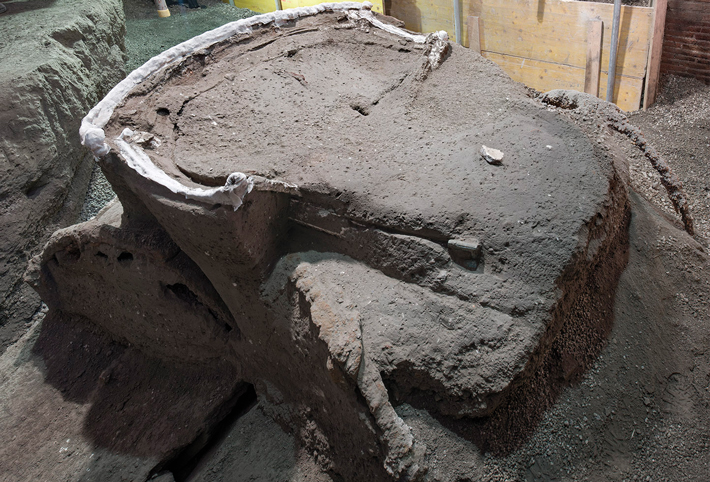
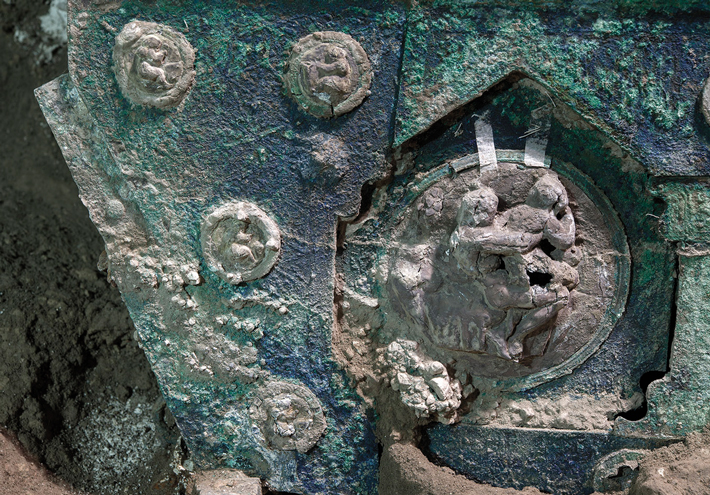 At the sprawling villa of Civita Giuliana just north of Pompeii, archaeologists unearthed a nearly intact four-wheeled chariot, the first of its kind to be found in the Roman world. The chariot, which could seat one or two people, was discovered in a portico adjoining a stable where researchers uncovered the remains of three horses in 2018. The chariot is extremely fragile, so archaeologists digitally documented it before dismantling it into 112 pieces, which they brought to a lab for further analysis and restoration. They also made plaster casts of impressions left by decayed organic material, including the chariot’s wooden steering shaft and ropes that linked mechanical elements of its ironclad wheels.
At the sprawling villa of Civita Giuliana just north of Pompeii, archaeologists unearthed a nearly intact four-wheeled chariot, the first of its kind to be found in the Roman world. The chariot, which could seat one or two people, was discovered in a portico adjoining a stable where researchers uncovered the remains of three horses in 2018. The chariot is extremely fragile, so archaeologists digitally documented it before dismantling it into 112 pieces, which they brought to a lab for further analysis and restoration. They also made plaster casts of impressions left by decayed organic material, including the chariot’s wooden steering shaft and ropes that linked mechanical elements of its ironclad wheels.
Researchers believe the chariot is a pilentum, a type of vehicle known only from ancient sources that mention it was used by high-status women and priestesses. Its wooden sides are painted red and black and bear traces of floral motifs. On the vehicle’s rear, circular reliefs made of bronze and other metals feature erotic images, including scenes of frolicking followers of the wine god, Bacchus, and of the god of love, Eros. “The decoration is clearly related to the world of love,” says archaeologist Luana Toniolo of the Archaeological Park of Pompeii. “That’s why we initially thought the chariot could be connected with weddings. Now we think that it was probably used in some kind of countryside ritual.” For more, go to "Digging Deeper into Pompeii's Past."
New Neighbors
By MARLEY BROWN
Friday, December 03, 2021
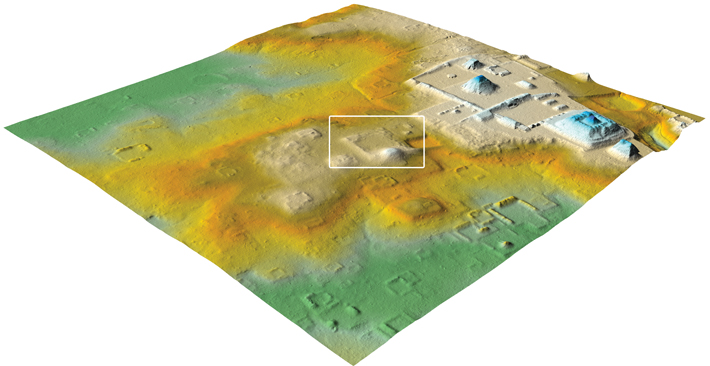 A Maya ceremonial pyramid and courtyard complex at Tikal, in present-day Guatemala, was hidden by jungle until its recent discovery during a lidar survey. Researchers believe the complex may once have been a hub for connections between Tikal and the massive metropolis of Teotihuacan, more than 600 miles away, near Mexico City. Upon examining the lidar scans of the Tikal complex, archaeologists noticed that it closely resembles the structure known as la Ciudadela, or the Citadel, at Teotihuacan. Archaeologist Edwin Román Ramírez of the Foundation for Maya Cultural and Natural Heritage says that the complex at Tikal is even oriented similarly to the one at Teotihuacan.
A Maya ceremonial pyramid and courtyard complex at Tikal, in present-day Guatemala, was hidden by jungle until its recent discovery during a lidar survey. Researchers believe the complex may once have been a hub for connections between Tikal and the massive metropolis of Teotihuacan, more than 600 miles away, near Mexico City. Upon examining the lidar scans of the Tikal complex, archaeologists noticed that it closely resembles the structure known as la Ciudadela, or the Citadel, at Teotihuacan. Archaeologist Edwin Román Ramírez of the Foundation for Maya Cultural and Natural Heritage says that the complex at Tikal is even oriented similarly to the one at Teotihuacan.
The Maya renovated the Tikal complex’s structures periodically starting around A.D. 250, possibly as its relationship with Teotihuacan changed. Textual and iconographic sources suggest that in the year A.D. 378 Tikal was conquered by an outside ruler, likely from Teotihuacan, named Sihyaj K’ahk’, or Born from Fire. Román Ramírez has found evidence from earlier stages of the complex suggesting that people living there even before that conquest may have been from Teotihuacan, or were at least familiar with Teotihuacan culture. This includes central Mexican–style building techniques, green obsidian spearpoints associated with Teotihuacan warriors, and Teotihuacan-style incense burners. “This was a long-term relationship,” says Román Ramírez. “It may have started out as commercial or mutually beneficial and later became one of conquest.”
Advertisement
Advertisement
IN THIS ISSUE
Digs & Discoveries
The Roots of Violence
Tamil Royal Palace
Cave Fit for a King...or a Hermit
Burn Notice
Russian River Silver
New Neighbors
Viking Roles
A Ride Through the Countryside
Japan's Genetic History
Off the Grid
Around the World
Uncovering a whisky distillery, the first Azoreans, Chinese mummy genetics, and an ancient hangover cure
Artifact
Opener to interpretation
Advertisement

Recent Issues
-
 May/June 2024
May/June 2024
-
 March/April 2024
March/April 2024
-
 January/February 2024
January/February 2024
-
 November/December 2023
November/December 2023
-
 September/October 2023
September/October 2023
-
 July/August 2023
July/August 2023
-
 May/June 2023
May/June 2023
-
 March/April 2023
March/April 2023
-
 January/February 2023
January/February 2023
-
 November/December 2022
November/December 2022
-
 September/October 2022
September/October 2022
-
 July/August 2022
July/August 2022
-
 May/June 2022
May/June 2022
-
 March/April 2022
March/April 2022
-
 January/February 2022
January/February 2022
-
 November/December 2021
November/December 2021
-
 September/October 2021
September/October 2021
-
 July/August 2021
July/August 2021
-
 May/June 2021
May/June 2021
-
 March/April 2021
March/April 2021
-
 January/February 2021
January/February 2021
-
 November/December 2020
November/December 2020
-
 September/October 2020
September/October 2020
-
 July/August 2020
July/August 2020
-
 May/June 2020
May/June 2020
-
 March/April 2020
March/April 2020
-
 January/February 2020
January/February 2020
-
 November/December 2019
November/December 2019
-
 September/October 2019
September/October 2019
-
 July/August 2019
July/August 2019
-
 May/June 2019
May/June 2019
-
 March/April 2019
March/April 2019
-
 January/February 2019
January/February 2019
-
 November/December 2018
November/December 2018
-
 September/October 2018
September/October 2018
-
 July/August 2018
July/August 2018
-
 May/June 2018
May/June 2018
-
 March/April 2018
March/April 2018
-
 January/February 2018
January/February 2018
-
 November/December 2017
November/December 2017
-
 September/October 2017
September/October 2017
-
 July/August 2017
July/August 2017
-
 May/June 2017
May/June 2017
-
 March/April 2017
March/April 2017
-
 January/February 2017
January/February 2017
-
 November/December 2016
November/December 2016
-
 September/October 2016
September/October 2016
-
 July/August 2016
July/August 2016
-
 May/June 2016
May/June 2016
-
 March/April 2016
March/April 2016
-
 January/February 2016
January/February 2016
-
 November/December 2015
November/December 2015
-
 September/October 2015
September/October 2015
-
 July/August 2015
July/August 2015
-
 May/June 2015
May/June 2015
-
 March/April 2015
March/April 2015
-
 January/February 2015
January/February 2015
-
 November/December 2014
November/December 2014
-
 September/October 2014
September/October 2014
-
 July/August 2014
July/August 2014
-
 May/June 2014
May/June 2014
-
 March/April 2014
March/April 2014
-
 January/February 2014
January/February 2014
-
 November/December 2013
November/December 2013
-
 September/October 2013
September/October 2013
-
 July/August 2013
July/August 2013
-
 May/June 2013
May/June 2013
-
 March/April 2013
March/April 2013
-
 January/February 2013
January/February 2013
-
 November/December 2012
November/December 2012
-
 September/October 2012
September/October 2012
-
 July/August 2012
July/August 2012
-
 May/June 2012
May/June 2012
-
 March/April 2012
March/April 2012
-
 January/February 2012
January/February 2012
-
 November/December 2011
November/December 2011
-
 September/October 2011
September/October 2011
-
 July/August 2011
July/August 2011
-
 May/June 2011
May/June 2011
-
 March/April 2011
March/April 2011
-
 January/February 2011
January/February 2011
Advertisement






